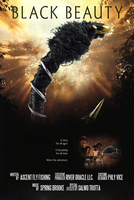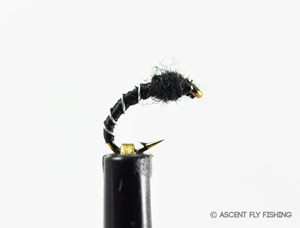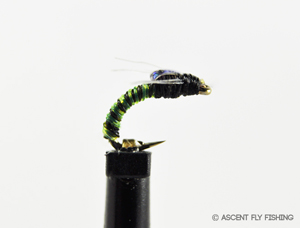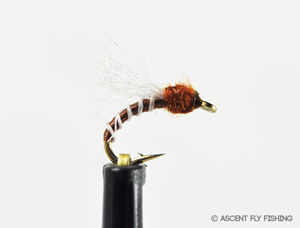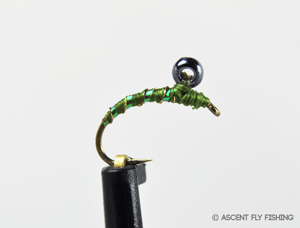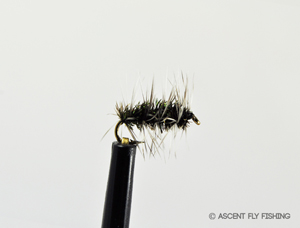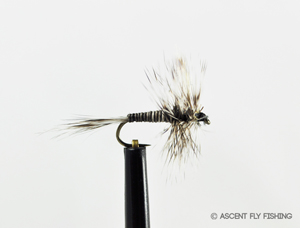A Fly Fisher's Guide to Identifying and Matching Midges: Part II
Posted by Peter Stitcher on 1st Feb 2016
Having covered the characteristics that define each stage of the midge life cycle in last month's article The Midge Master: Part 1 it's time to take that knowledge into your fly box! With almost 17,000 species of midge populating North America's waters, it is easy to get overwhelmed by the sheer quantity of fly patterns sold by your local fly shop. Midges as a family are small in stature, and have minimal variation in wing, body shape, and color separating the different species. The best strategy therefore when seeking to match midges is to have a go-to selection of generalist and attractor patterns stocked in your fly box. These patterns should pack the necessary spark created by wire ribs, beadheads, or flashbacks to capture the trout's attention, while embracing a general midge body shape, size, and coloration allow each fly pattern to effectively match thousands of midge species instead of just one. Here is a list of my Deadly Dozen Midges that will allow you to match more hatches with fewer flies and become a true Midge Master!
Midge Larva Patterns
Tied on hooks between size 14 - 24, midge larva flies provide a four season source of food for trout on both lakes and streams. Typically anchored to rocks along the bottom of the river or buried in the fine sediment on the bottom of a lake, midge larva are easily displaced from their perches and drifted into the paths of feeding trout. Flies created to imitate midge larva are usually tied to a curved hook, and are a constant diameter from abdomen to thorax, with one slightly thickened end closest to the eye of the hook to imitate the tiny head of the larva.
Dry/Wet: Wet
Fly Category: Generalist Pattern
Color: Black with Silver Rib
Hook Size: 18 - 24
Dry/Wet: Wet
Fly Category: Generalist Pattern
Color: Black, Olive, Brown, Grey, or Red with a Silver Rib
Hook Size: 14 - 20
Dry/Wet: Wet
Fly Category: Generalist Pattern
Color: White & Black with Silver Rib
Hook Size: 20 - 24
Dry/Wet: Wet
Fly Category: Attractor Pattern
Color: Black, Grey, Red, Olive, or White Ribs with a Flashback
Hook Size: 20 - 22
Fly Category: Attractor Pattern
Color: Red with Silver Rib
Hook Size: 18 - 22
Dry/Wet: Wet
Fly Category: Attractor Pattern
Color: Copper with Gold Wing Bud
Hook Size: 18 - 22
Midge Pupa Patterns
Spanning the distance from the bottom of the lake or river through the surface of the water, the emerging midge pupae offers some of the most consistent action for the fly fisher. Fished either with a dead drift in the current of a river, or a slow retrieve towards the surface of a lake, midges often emerge en masse, and trout will feast on the emerging pupa. While sharing many characteristics with midge larva patterns, midge pupa are tied with a thickened thorax, and elements that imitate emerging wings. Commonly tied to hooks between size 12-24, your broadest reaching patterns will be tied in sizes 16-22.
Dry/Wet: Wet
Fly Category: Generalist Pattern
Color: Brown with White Rib
Hook Size: 18 - 24
Dry/Wet: Wet
Fly Category: Generalist Pattern
Color: Grey, Olive, or Black with Brass Rib
Hook Size: 18 - 22
Dry/Wet: Wet
Fly Category: Attractor Pattern
Color: Black, Olive, Grey, Red, or ICE with Flash Rib
Hook Size: 14 - 20
Adult Midge Patterns
Soon after the midge pupa leaves the water, they return as an adult to lay their eggs. Don't let the diminutive size of the adult midge intimidate you! Trophy sized trout will actively feed on midges at the surface of the water, and the fly fisher should be equipped with patterns in sizes 14-22 in order to take advantage of this action.
Dry/Wet: Dry
Fly Category: Generalist Pattern
Color: Black with Hi-Vis Wing
Hook Size: 18-22
Dry/Wet: Dry
Fly Category: Generalist Pattern
Color: Peacock, Olive, or Blonde
Hook Size: 18 - 22
Dry/Wet: Dry
Fly Category: True-Fly Pattern
Color: Salt & Pepper
Hook Size: 14 - 20
Armed with these twelve go-to midge patterns, you should be locked and loaded for action during every phase of the midge hatch! You have now learned the way of the midge master!


